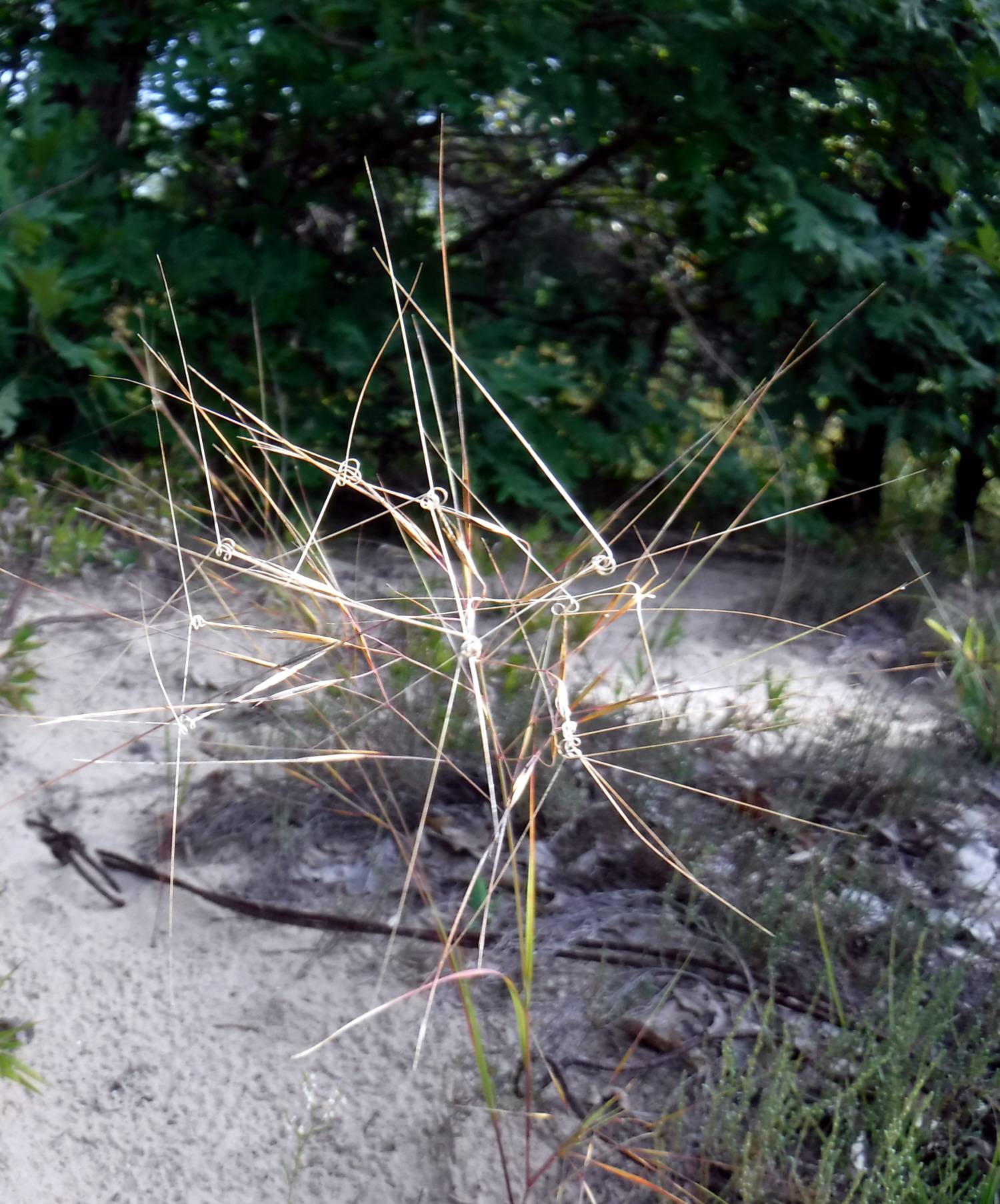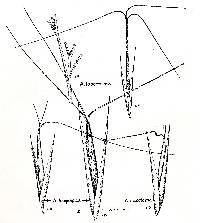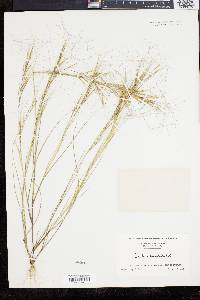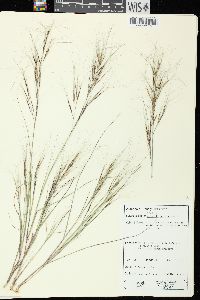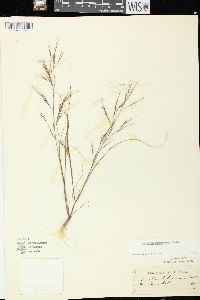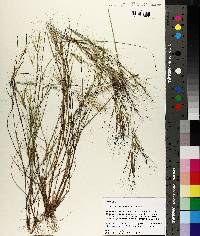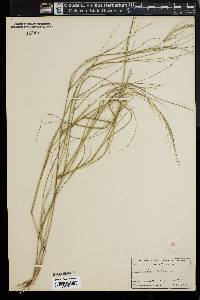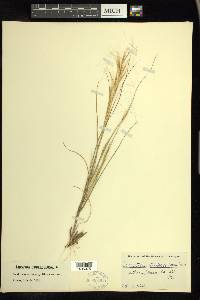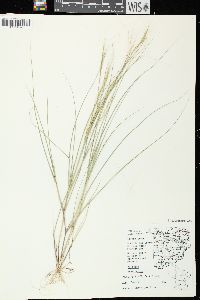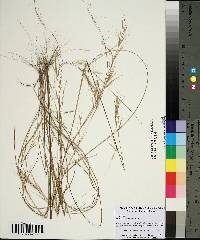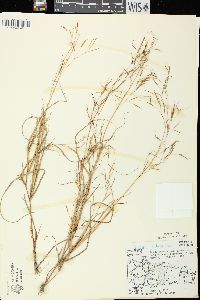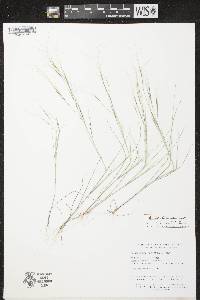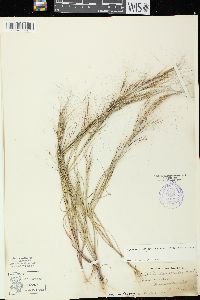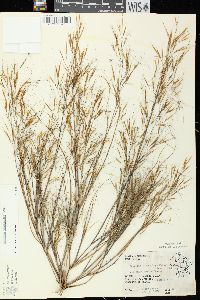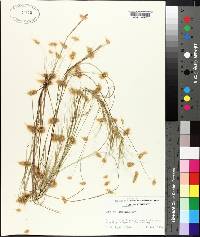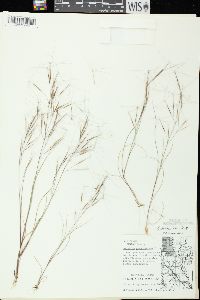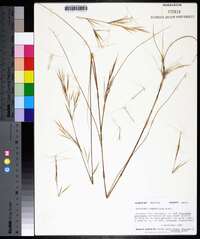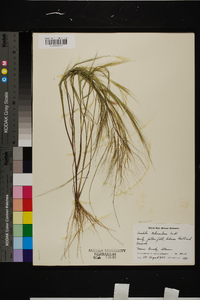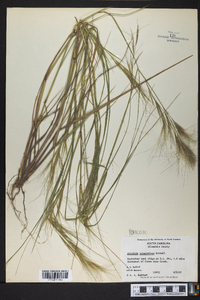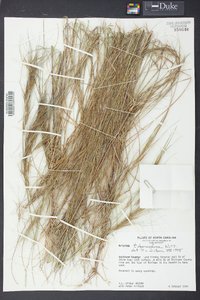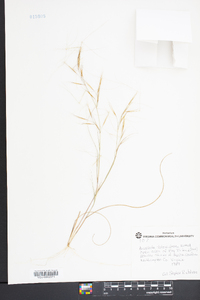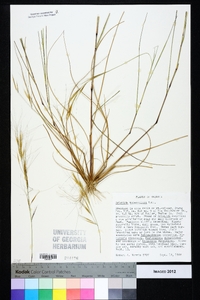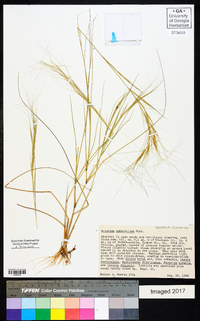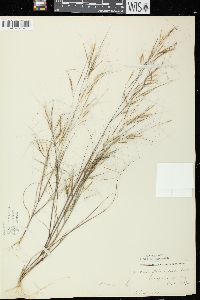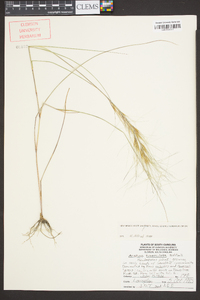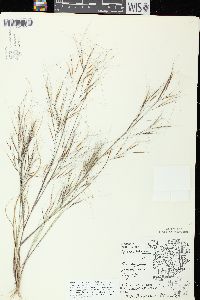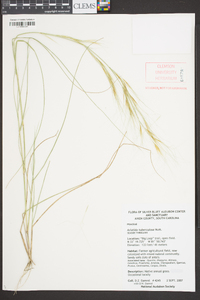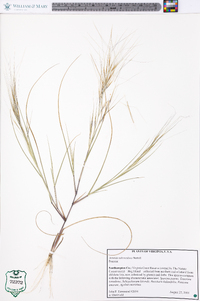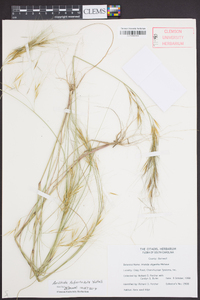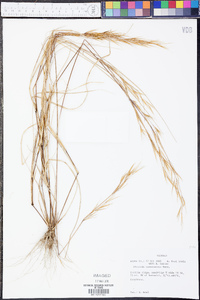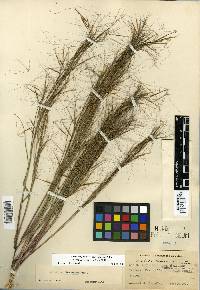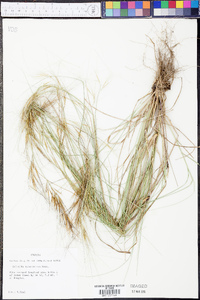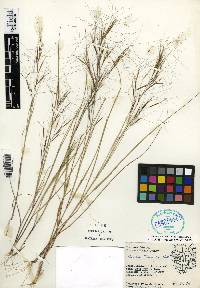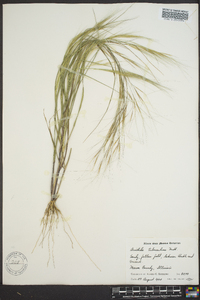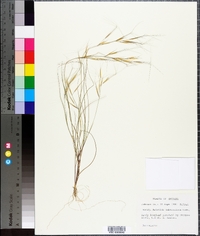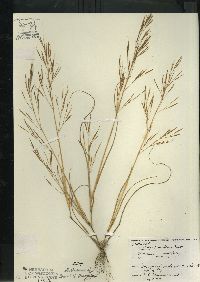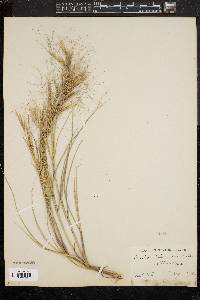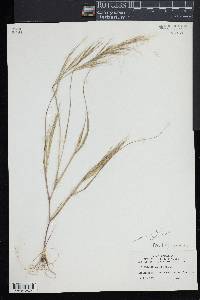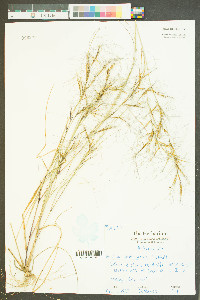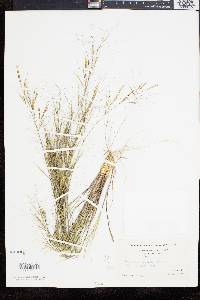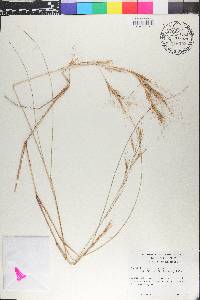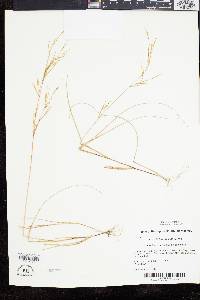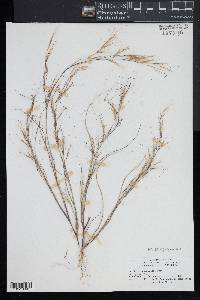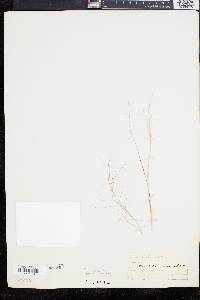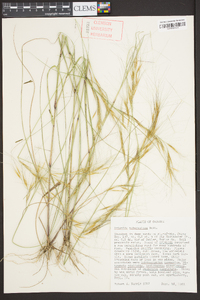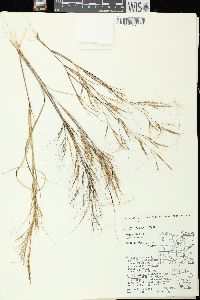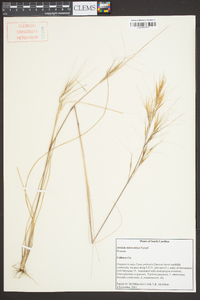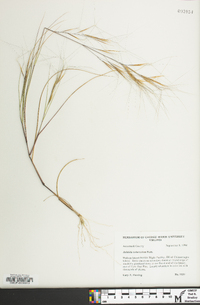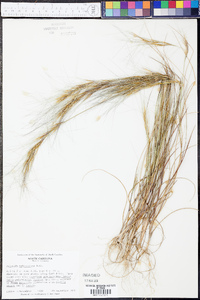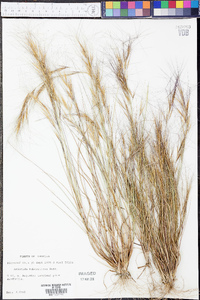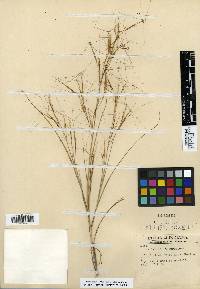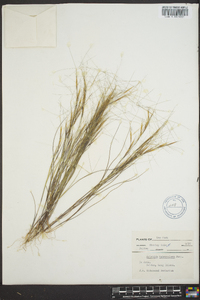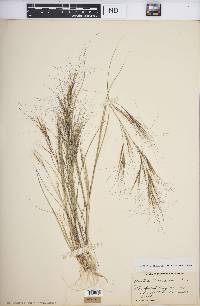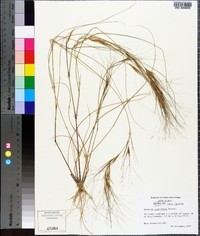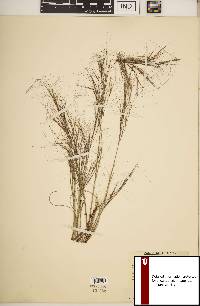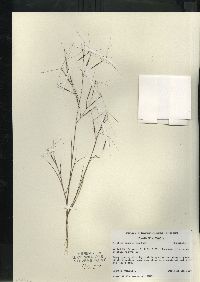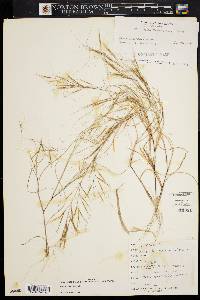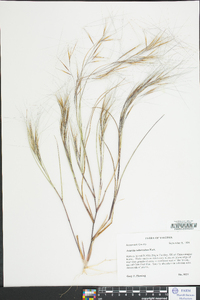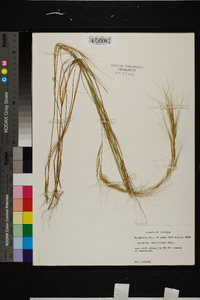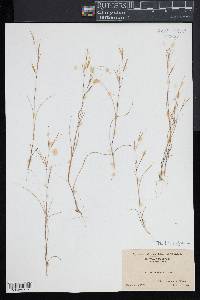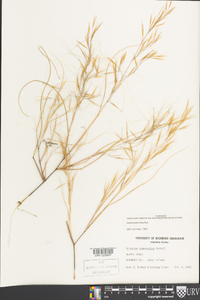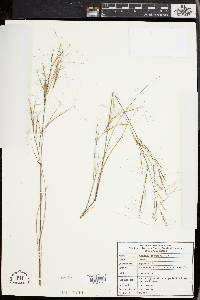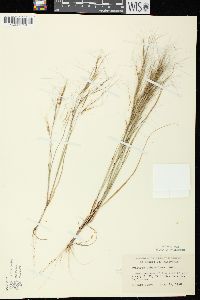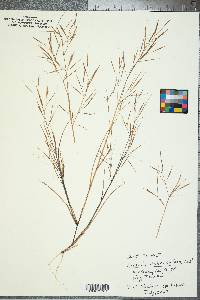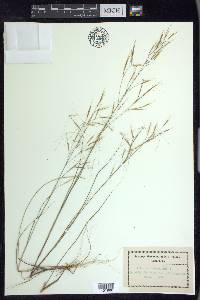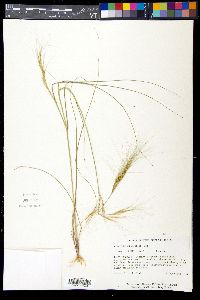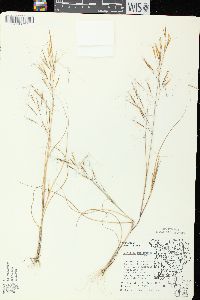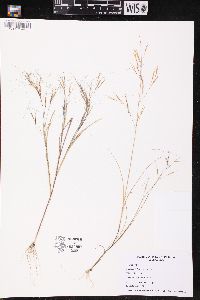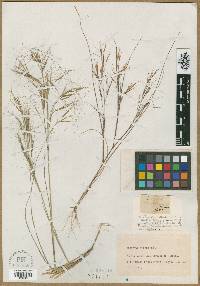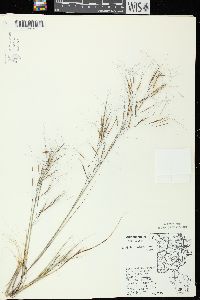Aristida tuberculosa
|
|
|
|
Family: Poaceae
Seaside Three-Awn, more...Seaside Threeawn
|
Plants annual. Culms (25)40-100 cm, erect or decumbent to ascending near the base, highly branched above the base; nodes and internodes glabrous. Leaves cauline; sheaths usually slightly shorter than the internodes, glabrous or pilose; collars often with a line of tangled hairs; ligules about 0.5 mm; blades 8-25 cm long, 2-4 mm wide, light green, flat to loosely involute, glabrous and smooth abaxially, scabridulous adaxially. Inflorescences paniculate, 10-20 cm long, 3-10 cm wide; rachis nodes glabrous, scabrous, or strigose; primary branches 1-4 cm, stiffly ascending, with axillary pulvini, with 1-4 spikelets per branch. Spikelets loosely congested. Glumes 20-30 mm, yellowish-brown, 1-veined, apices narrowing to a 5-10 mm awn; upper glumes slightly longer than the lower glumes; calluses 3-4 mm; lemmas 10-14 mm, dark and mottled at maturity, glabrous or occasionally sparsely pubescent, not beaked, junction of the lemma and awns evident; awns twisted together basally into a 8-15 mm column, free portions 30-40 mm, those of the central and lateral awns similar in length, strongly curved to arcuate near the base, straight and strongly divergent to reflexed distally, disarticulating at the base of the column at maturity; anthers 3, about 2.5 mm, brownish. Caryopses 8-10 mm, dark brown. 2n = unknown. Aristida tuberculosa grows in sandy fields, hills, pinelands, and disturbed areas. Along the Atlantic coastal fringe, it grows on maritime dunes; inland it is associated with xeric pine-oak sandhills. It is generally similar to A. desmantha, but has longer glumes, calluses, and awns. Like A. desmantha, A. tuberculosa is restricted to the United States. Annual herb 25 cm - 1.2 m tall Leaves: borne along the culm, having open sheaths usually a little shorter than the internodes and hairless or soft-haired with the collars usually having a line of tangled hairs. The ligules are made of hairs about 0.5 mm long, and the blades are light green, 8 - 25 cm long, 2 - 4 mm wide, flat or with margins loosely rolling toward the upper surface of the midvein (involute), hairless beneath, and rough above. Inflorescence: terminal, 10 - 20 cm long, 3 - 10 cm wide, with stiffly ascending primary branches 1 - 4 cm long. Fruit: a dark brown, caryopsis, 8 - 10 mm long, spindle-shaped, with a linear scar. Culm: erect or decumbent to ascending at the base, 25 cm - 1 m tall, highly branched above the base, with hairless nodes and internodes. Spikelets: one to four per branch. Glumes: yellowish brown, 2 - 3 cm long with the upper glumes slightly longer than the lower ones, thin, single-veined, with an awn 5 - 10 mm long. Florets: one per spikelet, with three brownish anthers about 2.5 mm long. Lemma: dark and mottled when mature, 10 - 14 mm long, spindle-shaped and rolled up longitudinally (convolute), three-veined, hairless or sometimes sparsely hairy, with three nearly equal awns. The awns are twisted at the base into a 8 - 15 mm column but remain untwisted and straight at the top 3 - 4 cm. Palea: shorter than the lemma, two-veined. Similar species: The other species of Aristida that grow in the Chicago Region do not have the distinctive twisted column of awns seen in Aristida tuberculosa. Flowering: mid August to late September Habitat and ecology: Dry sandy soil that is fairly open. Occurence in the Chicago region: native Etymology: Aristida comes from the Latin word arista, meaning awn. Tuberculosa means "bearing tubercles," which are small tuber-like projections. Author: The Morton Arboretum Annual 3-8 dm, the culms branched at base and lower nodes; lower sheaths villous, the upper glabrous or nearly so; blades 1-3 mm wide, involute at least when dry; panicle very lax and open, sparsely branched, 1-3 dm; glumes subequal, 20-28 mm, including the short awn, the first scabrous on the keel; lemma 11-14 mm, its awns about equal, united at base into a twisted column 7-13 mm, the free parts loosely coiled at base, about horizontal, 3-5 cm. Dry sterile soil, especially on dunes, along the coast from Mass. to Ga., and inland from Ind. and s. Mich. to Minn. and Io. Gleason, Henry A. & Cronquist, Arthur J. 1991. Manual of vascular plants of northeastern United States and adjacent Canada. lxxv + 910 pp. ©The New York Botanical Garden. All rights reserved. Used by permission. From Flora of Indiana (1940) by Charles C. Deam Local in the northwestern part of the state where it grows in almost pure sand on old beaches and low dunes. Indiana Coefficient of Conservatism: C = 10 Wetland Indicator Status: n/a |

